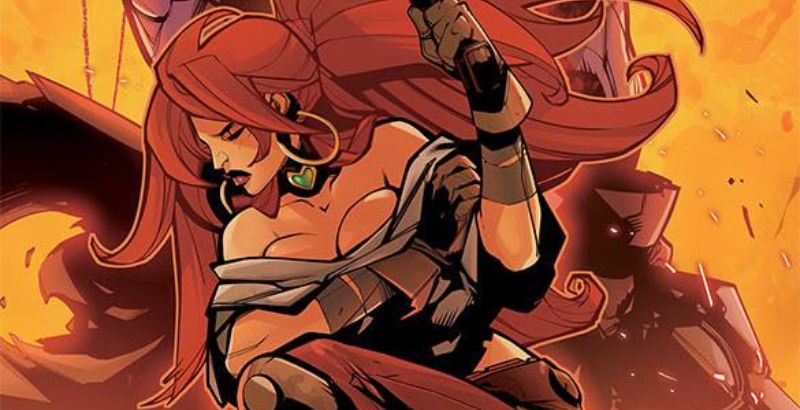
20XX #1 is published by Image Comics, written by Jonathan Luna and Lauren Keely, with art and lettering by Jonathan Luna. In the future, a new disease threatens humanity. With a one percent survival rate, nearly all who contract the contagion are killed by it. The few who survive become something different. Acquiring limited telekinetic abilities, survivors are known as syms. As a result, humanity once again gets to show how great it is at dealing with those who are different.
20XX #1 does a good job of introducing readers to its world. Elements are brought in naturally as protagonist Meera begins what feels like a normal day. Everything from advances in tech to the cultural fear of disease is introduced without any focus placed on it. Because of this, no time is wasted on exposition. This also avoids having Meera thinking about these subjects. I appreciate the writers’ avoidance of using the protagonist’s thoughts to explain the situation. While it is an effective means of delivering information, it can also make the character feel paranoid and obsessive.
Once Meera’s world is changed by the virus, we are introduced to what 20XX #1 is really about. While the survivors have been given what could be assumed to be a gift, it instead forms a curse. Being identified as a survivor (sym) is akin to being branded most of the time. They are looked upon as freaks and outsiders. These themes cannot help but call up similarities to Marvel’s X-Men books. Just as with those, the few with powers are hated by the masses. Only, in this world, the existence of the empowered is directly linked to the deaths of all those other people who contracted the virus and didn’t survive. I can imagine the sort of targeted hate this small group of survivors will be subjected to in the coming issues.
20XX #1 also takes a look at how, given how few the options presented to survivors are, many syms are forced to resort to membership in a gang to survive. This clearly further tarnishes the cultural conception of the group, even as it is those conceptions that create the need for such measures in the first place. This is a poignant instance of art imitating life that hopefully won’t pass over readers’ heads.
20XX #1’s art does a solid job of conveying its story. I’m not sure why the choice was made to go with black and white illustrations instead of color, but I don’t feel it hurts the book any. I’m not a fan of black and white myself and still found the story engaging both narratively and visually.
With a cliffhanger ending that leaves room for the story to advance in a number of directions, 20XX #1 certainly gives readers plenty of incentive to tune back in for issue two. I hope the creative team of Luna and Keely can continue to find traction with this story. It feels like this book could tell a powerful tale if it’s given the chance.
20XX #1 will be available December 4th wherever comics are sold.
20XX #1
TL;DR
It feels like this book could tell a powerful tale if it’s given the chance.







